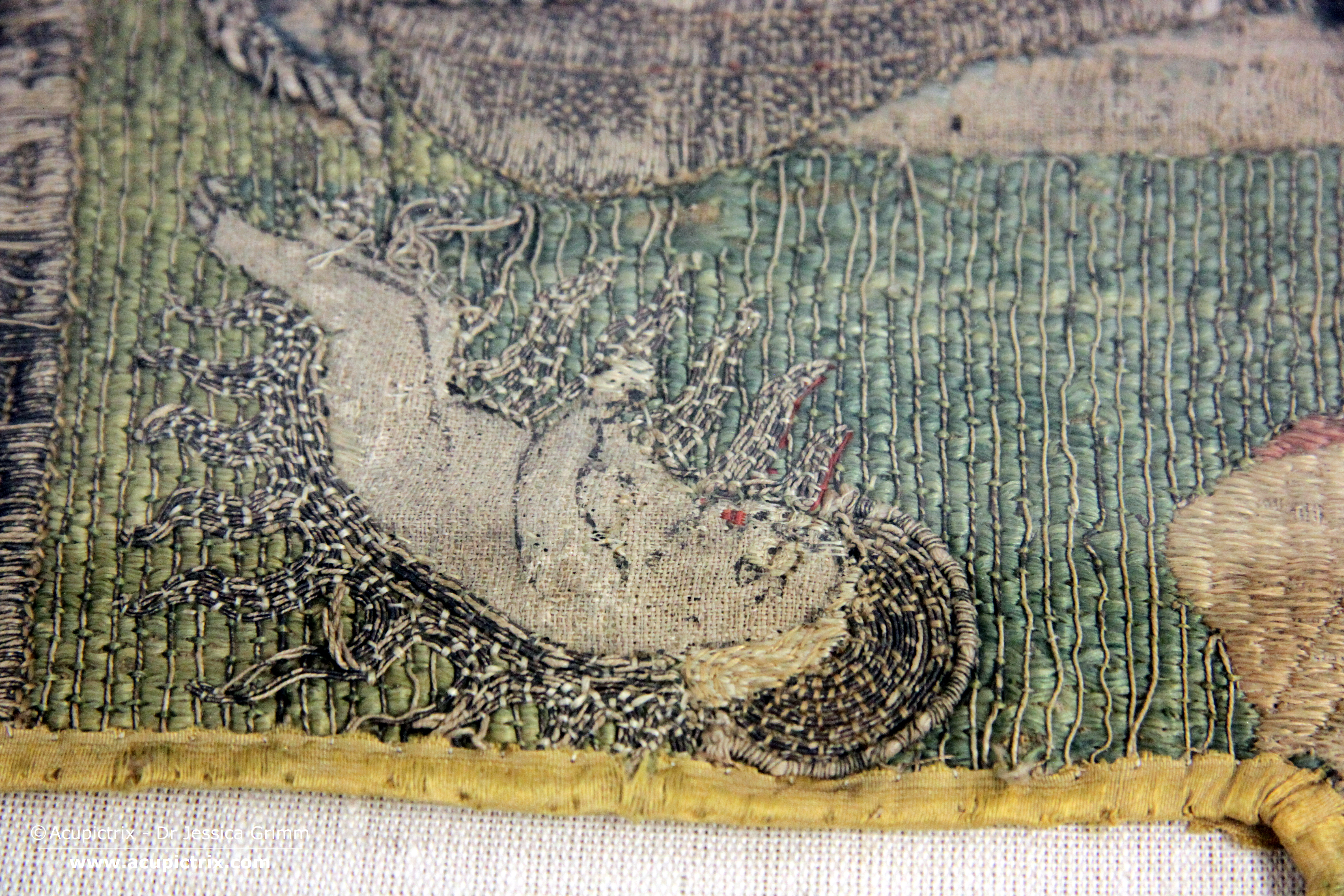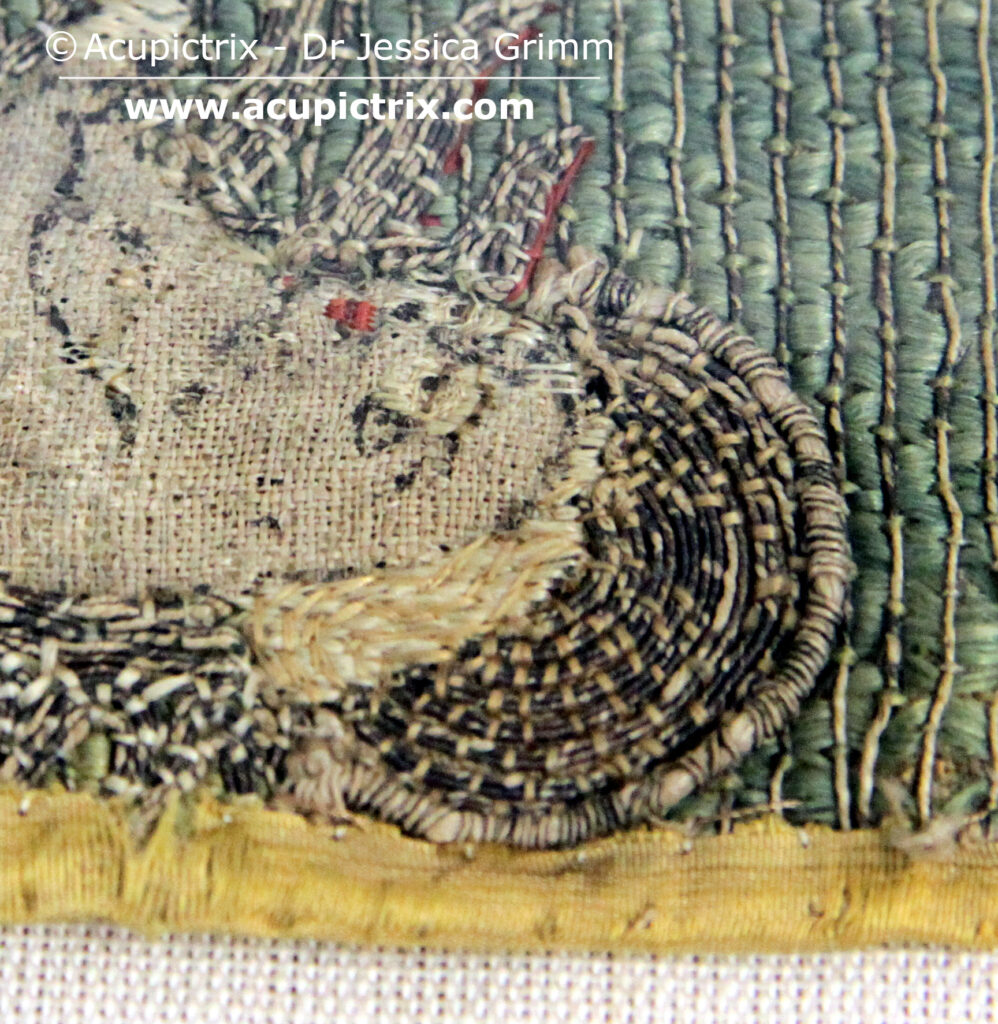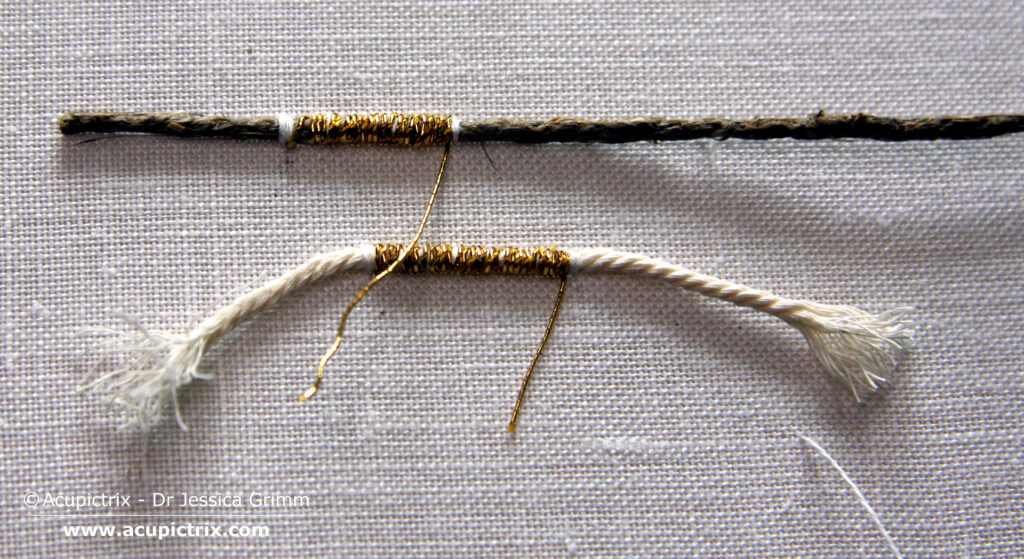German medieval embroideries are often characterised by a composite thread not seen elsewhere: gold gimp. This is a relatively thick piece of string wrapped with a thin thread of membrane gold (gilt animal gut wrapped around a linen core). Was this a ready-made thread? Did the embroiderers make the thread themselves? Is it either pre-made or made during the actual embroidery? Let’s see if we can find the answers!

Here you see a detail of the Nativity scene from the chasuble kept at the Kulturhistorisches Museum Magdeburg. The nimbus is edged with this composite thread: gold gimp.

Here’s a close-up of the gold gimp. The wrapping isn’t very neat. But what is more puzzling: there are no couching stitches to attach the gold gimp to the background fabric. The membrane thread isn’t used to do this either. Firstly, it would be far too fragile to endure being pulled through the fabric multiple times. I’ve worked with recreated membrane threads, and they definitely do not hold up to this kind of abuse. Secondly, you can tell from the above picture that the membrane thread is wrapped around the thick string and does not penetrate the fabric.
And what about the ‘mess’ on either end of the gold gimp? What’s that all about? And then I remembered that Alison Cole had written about making silk gimp before it was commercially available. She describes a method whereby you make that composite thread whilst you embroider. Let’s see if that works.

The ratio of string to membrane gold is about 5:1. From my experiments with the recreated membrane gold, I know that it is more similar to Japanese thread than to passing thread. But it isn’t the same. Its core is made of linen instead of cotton, and the spinning direction is opposite.
Trying to recreate gold gimp wasn’t entirely successful. It works, but it isn’t very neat. And it is very fiddly to do. Nevertheless, I did learn a few things. Firstly, it is possible to hide the couching thread completely. Especially when you use a very thin linen or silk thread for this (mine was a bit bulky). Secondly, the thick string should be as firm as possible. Cotton string worked less satisfactorily than stiff, non-squidgy linen string. And thrirdly, one should leave a tail of the gold thread at the start. This can be used to wrap the plunged string at the start. Just as I was able to do at the end.
My little experiment also hints at the impossibility of producing a gold gimp as a pre-made thread. The wraps would come undone as soon as you take off tension. You would need to glue them onto the string to prevent this from happening. And I don’t think there is glue in these threads. The glue would adhere to the thin membrane and tear the fragile thread apart as soon as you manipulate it to work with it.
Any thoughts?
